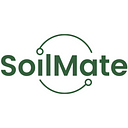The most common reasons for yield loss
Let’s see the factors and practices that affect crop input and how we can avoid it if it is possible.
At the current time of rapid population growth, the primary aim of the farmers is to produce more, better and faster. The global population is predicted to reach 9.2 billion people by 2050. Based on those estimates, the FAO is considering total crop production to increase by 1.5 percent yearly. So, the growers don’t have much time to act wrong.
However, there are a lot of unpredictable factors influencing yield productivity beyond the farmers’ control.
The crop production sector plays a significant role in reaching food availability worldwide and achieving food security. In the countries where the population relies on agriculture and 70 percent of its population consists of monoculture farmers, their agricultural goods are the most valuable trade product. For these countries, agriculture, namely crop production — is a skeleton of the economy.
Factors affecting yield loss
Natural disasters always cost farmers and growers billions of dollars every year.
The last report from the Food and Agriculture Organization between 2008 and 2018 the impact of natural disasters sustain a loss for the agricultural sector near to $108B:
- the droughts that almost exclusively impact agriculture in ten years led to the loss of $37B overall and occupies about 34 percent of production loss;
- floods are the second biggest disaster to Agriculture caused $21B of loss and the amount of 19 percent of total losses;
- between 2008–2018 extreme storms such as tropical hurricanes caused more than $19 billion damage, estimating 18 percent of overall losses;
- The fight against pests, diseases, and infestations is also leading to expenses. Over the period, such disasters were worth almost $10 billion, and 9 percent of all losses;
- wildfires seem to have less impact on agricultural production. However, this $1B or 1 percent of losses don’t cover losses in the forestry sector. Remember the devastating fires that burned millions of hectares in California (2017), Greece (2018), the Amazon (2019), and Australia (2019–2020) and the impact of which we are going to experience shortly.
Dangerous land-based activities that may harm the yields
Except for the natural phenomena, several traditional land activities pretend to cause a yield decrease when they are wrongly implemented and managed. Even the tillage could be harmful to future yields, lead to depleting organic material, and cause soil erosion in non-compliance with the requirements.
Seed sowing depth depends as well. Too deeply or too high seed planting is a threat that inhibits their growth. However, if they germinated, some plants could face a risk of being influenced throughout their life.
The next risky activity is fertilizer usage. Their misuse is directly related to the emergence of dead zones as a collapsed water system with no animal life under the water. Our article mentions more information about the excessive use of chemical supplements: Nitrogen & Phosphorus crisis in the modern Agriculture | by Soil Mate | Mar 2021 | Medium.
Unfortunately, such usual crop management activities as tillage, planting, sowing depth, and weed control can be ineffective and even hazardous, making farming physically exhausting and economically expensive for growers and lands.
How to overcome yield reduction?
Agricultural development is critically important for improving yields and stable food production. However, there are some difficulties with the developing countries where the lack of knowledge and technologies makes them incapable of producing the necessary food.
Encouraging investment and knowledge transfer in farming technologies and science is a key driver in food production. Consequently, it helps to maintain food security and sustainable development.
In SoilMate, we developed the functionality to prevent yield loss by identifying plant stress, calculating necessary fertilizer amounts to avoid overuse, and detecting soil erosion.
Soon, we look forward to launching our models that would detect severely hazardous areas of risk regardless of their origin.
